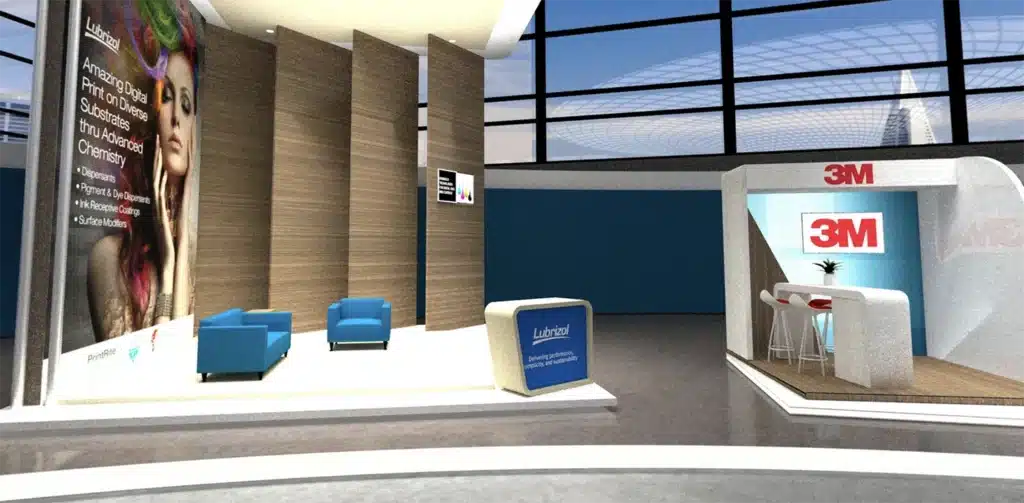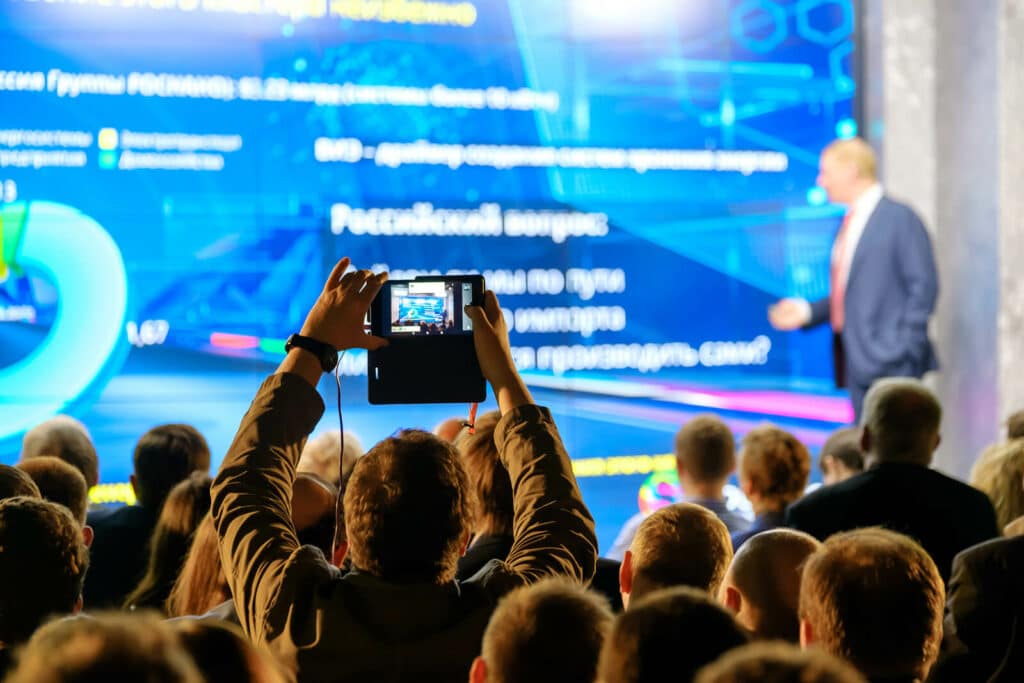Event sponsorship can be an effective way to produce a bigger, better event with more of what your audience wants. To make it work, you not only have to pick the right sponsors but also create sponsorship packages that deliver value to those sponsors.
What Is an Event Sponsor?
Event sponsors are organizations that provide an event with financial benefits. In exchange, the sponsoring organization receives benefits related to event promotion or advertising.
Benefits of Event Sponsorship
For the event itself, the payoff is simple: Sponsorships help reduce the cost of holding the event. By selling event sponsorship packages or exchanging sponsorships for goods or services, event planners can improve the event and simultaneously reduce its overall cost.
For sponsors, event sponsorship is all about visibility. Sponsors get access to an event audience. This gives them the chance to strengthen existing customer relationships or reach new demographics. They also get advertising benefits that let them stand out from any competing organizations at the event. Ultimately, a successful sponsorship deal requires you to prove to sponsors that your event offers them a return on any investment they make. The specifics of return on investment (ROI) look different for each event and each sponsor, as not all sponsors are looking for the same kind of return.
For some sponsors, event ROI is all about making sales. But that’s not the only way they can benefit. By aligning with an event that provides the right audience, sponsors can:
- Raise brand awareness and brand exposure.
- Reposition their brands.
- Expand audience reach.
- Connect directly with customers.
- Differentiate themselves from competitors in positive ways that improve their brand’s reputation.
Launch new products to large audiences or boost sales of existing products.
Types of Event Sponsorship
Sponsorship deals come in four main types:
- Financial: The sponsoring organization pays money to the event host. In return, they receive advertising benefits.
- In-kind: The sponsoring organization provides free products or services to the event in exchange for advertising.
- Media: The sponsoring organization promotes the event on social media. For instance, a TV or radio network might provide free media coverage.
- Promotional partnership: This is similar to media sponsorship, but individuals rather than organizations provide media content. For instance, influencers, bloggers, and other social media personalities cover the event on their accounts.

What Kinds of Companies Make Good Sponsors?
What should you consider when looking for potential event sponsorship partners?
Your event needs: If you’d like sponsors to provide goods or services, you’ll want to hunt down the specific companies that provide them. Their target demographic also needs to be found in the people who attend your event.
Event type: The type of event you hold is important because it influences what types of sponsorship deals will be most appealing to potential sponsors. And this influences the types of organizations that might be interested in becoming sponsors for your event.
For instance, a common strategy for trade shows is to create sponsorship packages for exhibiting companies. Those that buy event sponsorship packages pay for perks such as premium advertising spots on the exhibit floor or the event website and other advantages. At a conference or meeting, sponsors might pay for keynote or presentation slots, exhibitor slots, or premium advertising.
Event audience: Organizations interested in sponsorship deals want to gain access to an audience relevant to their brand. For this reason, the audience for your event can be an even more significant determining factor than the event type. Look for sponsors in your industry—or adjacent industries—that are likely to share your target audience.
Event Sponsorship: Do This, Not That
1. Where to Find Sponsors
Your first task is to find potential sponsors. There’s more than one strategy for this and no reason you can’t use multiple methods to find suitable organizations. But try to resist reaching out to every organization you can think of. Casting too wide a net wastes a lot of time. Instead, target sponsors that align with your demographics and your organization’s values and culture.
Certain websites can help you find potential sponsors and help you pitch your event to organizations you’re interested in approaching. These include:
Looking for in-kind sponsors to provide goods or services? It can be useful to scout the city where you’re holding the event. Using local organizations is often more practical for event planners and potential sponsors.
Pro Tip: Keep it simple yet effective by working with an event planning company like ProGlobalEvents. We can help you find the perfect sponsor, tailor a dynamite pitch, and negotiate sponsorship contracts that both you and your sponsors benefit from.
2. Personalize Your Sponsorship Pitch
If you want to attract sponsors that will provide goods or services or make direct financial contributions, tailor your event sponsorship proposals accordingly. Don’t create a generic pitch that you feed to every potential sponsor. It’s much less likely to net you the result you want. To customize your pitch, you can:
Put yourself in the sponsor’s position: What would you want to know about the event and the perks of sponsorship? If you have testimonials or quotes from past sponsors, use that social proof to further show the value of event sponsorship.
Paint a picture: Describe your company, what you do, and why it matters. Do the same for the event. Describe the event experience as fully as possible, emphasizing the place that sponsors have in the picture.
Find the connections: Highlight the similarities between your company and theirs to find common ground. Demographics are important, but company values can be key. Shared values give prospective sponsors confidence that sponsoring your event will reflect well on their brands.
Explain the benefits: Above all, potential event sponsors want to know what they gain by sponsoring your event. What perks are they getting in exchange for their money? Include specific benefits rather than just general ones. They want to know where their sponsorship ROI comes from, so your pitch should provide as much detail as possible. For instance:
- Prime advertising locations on your event website, such as on the event registration page
- Advertising spots in event emails
- Advertising spots in the event app or key locations on the virtual event platform
- Banners in prominent locations at the event venue
- Dedicated sponsored exhibits or kiosks
- Targeted social media posts
Include hard data: Any potential sponsors you pitch to want to know, first and foremost, about the ROI potential of the event. Your sponsorship proposal must provide hard data that proves the sponsor will see some return on their investment. Ideally, your data should be from events you’ve hosted in the past. If you can, provide KPIs such as:
- Target market
- Attendance figures
- Attendee demographics
- Social media engagement metrics
If you’ve worked with sponsors in the past, provide case studies highlighting how they benefited, including KPIs and success metrics.
Provide options: Every prospective sponsor you approach is different. They want different things from sponsorship, and they have different budgets and resources available. That’s why it’s important to offer multiple options to the organizations you contact. Bring a wide range of potential perks and benefits to the table. That will give you plenty of room to negotiate sponsorship packages that benefit your organization and theirs.
Add unique perks: Give sponsors for your event the option to pay a premium in exchange for perks other sponsors don’t get. For instance, a unique perk might be the option to sponsor the keynote address or a networking session or afterparty. Other perks could include:
- Free coffee, courtesy of an event sponsor—with each coffee cup providing the chance to win a prize by visiting the sponsor’s booth
- Sponsored information kiosks, site maps, or floor decals that point the way to specific locations
- A sponsored greenroom for presenters and VIP attendees
- Free Wi-Fi, courtesy of one special sponsor – Let that sponsor choose the name and password for the connection. That can constitute a major sponsor perk, as most attendees will use the free Wi-Fi at the event.
Consider giving sponsors input: It might be easier to offer potential sponsors a list of sponsorship ideas to choose from, but that doesn’t necessarily get the best results. What if you hand over the reins to your sponsors—at least a little—and let them have some creative input on how they’d like to see their brand represented at your event?
Create multiple sponsorship packages: Rather than offering just one sponsorship package to every potential sponsor, create two or three sponsorship levels with varying levels of perks and benefits. This lets companies invest more money or less money in sponsorship according to their budgets, so even smaller companies can benefit.
For instance you might create tiers plus sponsorship packages of varying values. Your sponsorship packages could look something like this:
- Bronze: Company logo included on all event marketing materials and appearing on the sponsorship page on the event website; plus, an advertising spot in the event app
- Silver: Everything in the bronze package included, plus premium advertising in the event app and on the event website
- Gold: Everything in the previous tiers included, plus advertising slots in online sessions and a 30-second advertising slot before the main keynote
Platinum: Everything in previous tiers included, plus the event’s official afterparty named after the company and branded with the company logo
3. Avoid This in Your Sponsorship Pitch
Just as there are important points that can help you pitch successfully to a sponsor, there are some common mistakes to avoid.
Missing the mark: When you reach out to potential event attendees, you do so with information that’s tailored to the attendee experience. When you reach out to potential event sponsors, you must take the same approach. If your sponsorship proposal reiterates the same details you sent to people attending, you’re sure to bomb because that information just isn’t relevant.
Too little detail: When you pitch to sponsors, a quick 5- or 10-minute presentation isn’t going to cut it. Prospective sponsors want details—about the sponsorship package (or tiers), about your demographics, about the specific benefits of sponsoring this particular event.
Ignoring demographics: Don’t skimp on demographic research. One of the most important details all sponsors want to know is whether sponsoring your event gets them in front of the specific audience they’re looking for. To pitch successfully, you have to demonstrate that you can deliver the demographics the sponsor is looking for. Neglecting the follow-up: If you don’t finalize the deal on first contact, make sure to stay in contact after making your pitch. Failing to follow up could cost you sponsors.
How ProGlobalEvents and XtendLive Created a Digital Venue That Showcased Sponsors
In 2021 global commercial printing company EFI was forced to pivot to virtual for its annual conference. Using the XtendLive technology, we created an event that went way beyond the typical web-based virtual event platform and into the realm of immersive 3D events. The 8-day virtual event experience, attended by people from 58 countries, was hosted in a digital version of San Francisco Bay. It included a waterfront plaza, a general sessions theater, breakout spaces, and an Expo Hall to showcase offerings from the event’s sponsors. With this approach, attendees were able to visit sponsored booths in the Expo Hall, just as they would at a live event, proving that online events can provide plenty of value for sponsors.
Sponsorship Raises the Game for Your Event and Benefits Sponsors Too
While every company is looking for new ways to stand out from its competitors, not every company has considered becoming an event sponsor. That’s why it pays to do sponsorship outreach, even if you don’t have an existing business relationship. A well-crafted event sponsorship deal is a mutually beneficial opportunity that can also be the start of a long-term partnership.
If you’d like to hand this work off to someone else so you can focus on the event aspects that matter more to you, ProGlobalEvents is the best partner you could have. With years of experience finding and pitching sponsors, we can also manage the deals after they’re made, making sure no details get lost. Contact us today to learn how we can bring sponsorship to your event.









